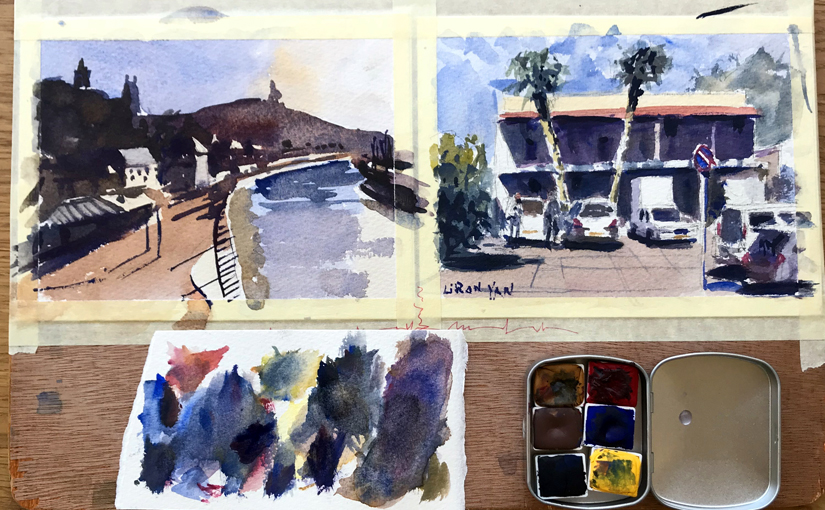Podcast: Play in new window | Download
Liron here! And today I want to tell you about me going back to the drawing fundamentals, and sharpening my pencil-related skills (pun intended).
Why Fundamentals
I’ve known for a long while now that what makes a piece of art really communicate with the viewer on a deeper level – is usually not the glitz and glamour.
Usually it’s good mastery of the fundamentals of art. Those would be composition, form, value, colors and so on.
Artists Teaching the Fundamentals
I recently also started exposing myself to artists and teachers that focus on the fundamentals.
This really awakened something in me that wants to revisit this ideas, strengthen my understanding and control of them, and incorporate them in my artwork (mainly watercolor painting).
If I really want to become the best I can, this is an integral part of the deal.
What Fundamentals I’ll Focus on
Here are some of the main fundamental principles / techniques I plan on working on: Pencil and line control, shading, volume and mass, simplification, working from direct observation, creating a sense of depth and more.
I’ve been doing this for about 2 weeks, and am already very excited about the results. I feel like this is the right decision for now.
Scheduling Fundamentals Practice
This is going to be the real challenge. I need to somehow carve up more time for pure practice and working on my skills.
This is already a challenge as it is, but I’ll get it to work. It’s at least as important for me to work on the quality of my art, as the rest of my daily tasks.
And by the way, I plan on continuing with the normal routine on YouTube. However, I may share new insights as I learn them. Especially if I feel like something is significant enough.
And with that being said, let’s move onto the Artist Corner!
Artist Corner
In this episode I talked about Marcos Beccari, an extremely skilled watercolor painter based in Brazil.
He paints what I would call hyper-realistic watercolors. His subjects are mainly the female figure and water.
It’s incredible and I highly recommend you check him out. Here’s his Instagram to get you started: @marcosbeccari
Here’s where you can find me
Check out my YouTube Channel – Liron Yanconsky
Or ask me questions on Instagram – @LironYanIL or Snapchat – @LironYan3
I hope you enjoyed this one. Take care, and we’ll talk again really soon,
– Liron


